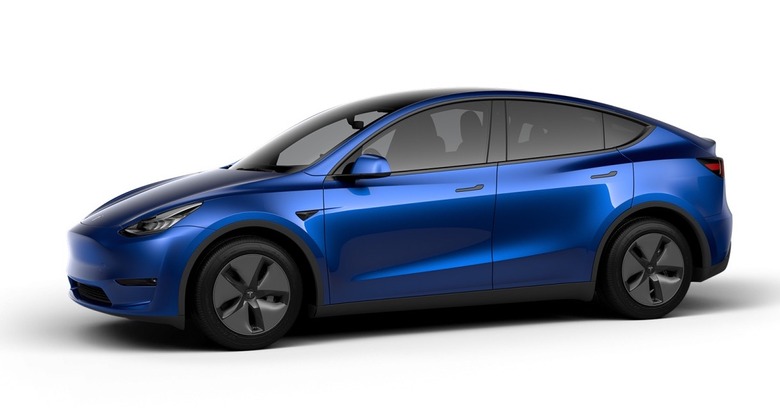Is The Tesla Model Y An SUV - And Does It Matter?
Nobody can quite agree on what the Tesla Model Y is. Last night, at the grand unveiling of what's set to be the fourth car in the automaker's electric line-up, Tesla CEO Elon Musk referred to the Model Y as a "midsize SUV"; others, meanwhile, have argued that it's actually a compact SUV.
Then there's the "crossover" name, which first became truly popular with the launch of the Toyota RAV4 back in 1996. Being a crossover isn't so much a matter of size, just to muddy the definition waters a little more. Instead, it's about having the styling cues of an SUV, but being based on a passenger car platform underneath.

That, certainly, goes some way to describe the Model Y. After all, it's clearly related to the Model 3, which is Tesla's compact premium passenger car. The lingering question, though, is whether the Model Y is crossover enough.
Expectations versus reality
What Tesla calls an SUV is not necessarily what everybody else refers to that way. The Model X – revealed in prototype form back in 2012, and in production from 2015 – is referred to by the company as an SUV. However there have been long-standing arguments that it's a misnomer.
The Model X, so some would insist, is more like a smoothed-over minivan. The curvaceous body – as much a magnification of the Model S sedan, as the Model Y is an enlargement of the Model 3 – has borrowed the SUV nomenclature, critics say, simply because SUVs sell better than minivans do. A minivan is the old-fashioned car you remember your parents taking you to school in. An SUV, however, is the dynamic promise of an active lifestyle (even if the furthest you go off-road is over the curb in the Costco parking lot).

Expectations from the Model Y were, therefore, fairly low in terms of just how SUV-inspired its design might be. Sure enough, it looks a lot closer to the Model 3 we're used to seeing now than some might have hoped for. It's taller, and it has more cargo space, and even the option of seven seats instead of the usual five, but is it an "SUV"?
When aero is your king
Elon Musk made clear Tesla's priorities at the Model Y reveal: aerodynamics are important. When you're making an electric car, you don't want to compete with air resistance. That demands a slippery body, particularly when you're dealing with a larger vehicle like the Model X or Model Y.
The metric there is "Cd" or coefficient of drag. In short, it's the measure of drag resistance of an object in a fluid environment, like air. Vehicles with a low Cd allow air to flow more smoothly across them: they require less energy to move forward than a blockier car or truck.
One of the headline figures for the Model Y is its 0.23 Cd. That's actually lower than the Model S' 0.24, and matches the Model 3 on which the new crossover is based. It's key, Tesla says, to the Model Y achieving its range figures, which clock in at as much as 300 miles on a charge from the Long Range model, or 230 miles – still impressive – from the Standard Range version which will follow on in 2021.
Problem is, cars that are slippery through the air don't tend to have the same aesthetic cues as traditional SUVs: the former are curvy, the latter squared-off and bulky. Tesla had to make a decision, and it opted for engineering.
Subtle, but subtle enough
True electric off-roaders are a niche of their own. Rivian is working on an all-electric pickup truck, for example, while Bollinger is going even further, with its Defender-inspired EV. They'll undoubtedly find buyers, but they're also probably too limited in their audience to deliver the sort of sales that Tesla needs the Model Y to achieve. Even when the Tesla pickup arrives, it may well focus more on consumer-friendly features than a vision of off-road ruggedness inspired by decades of internal-combustion trucks.

Plenty has been made of the fact that Tesla is tackling a huge potential market with the Model Y. Crossovers and small SUVs are big business right now, and Elon Musk & Co. are fully aware that the demand for a more affordable car than the Model X – but with similar SUV-esque styling cues – is considerable. The question, then, is whether the Model Y is sufficiently crossover in its design to win over those buyers.
I suspect the answer is yes. Though purists may argue that the new EV doesn't exactly fit whatever official definition holds sway that day, the reality is that consumers have different priorities. The Model Y is a crossover because Tesla says it is, and because – side by side with the Model 3 – it's bigger. The differences may be relatively subtle in comparison to what some automakers are doing, but not so much so that they dissuade too many sales.
